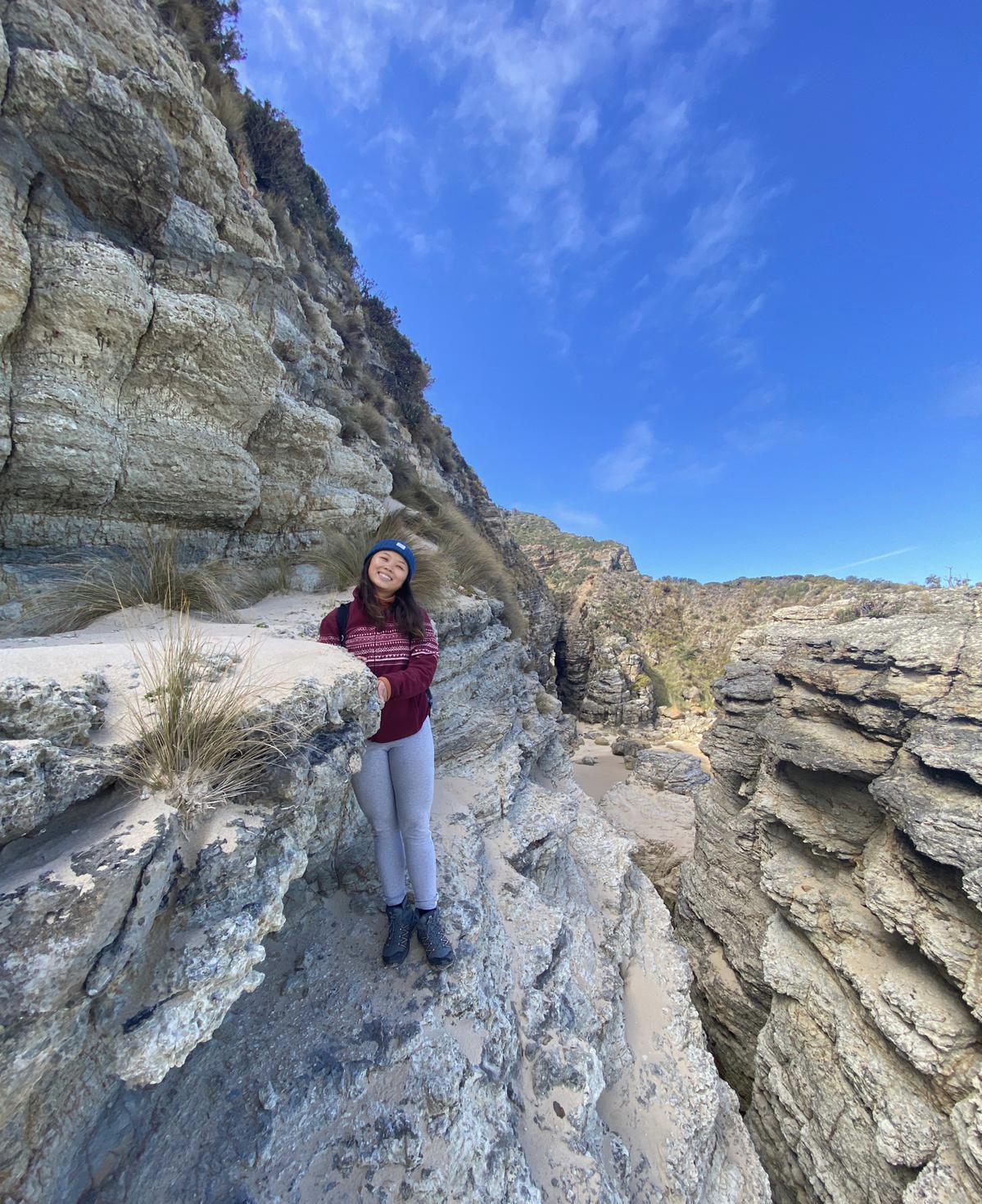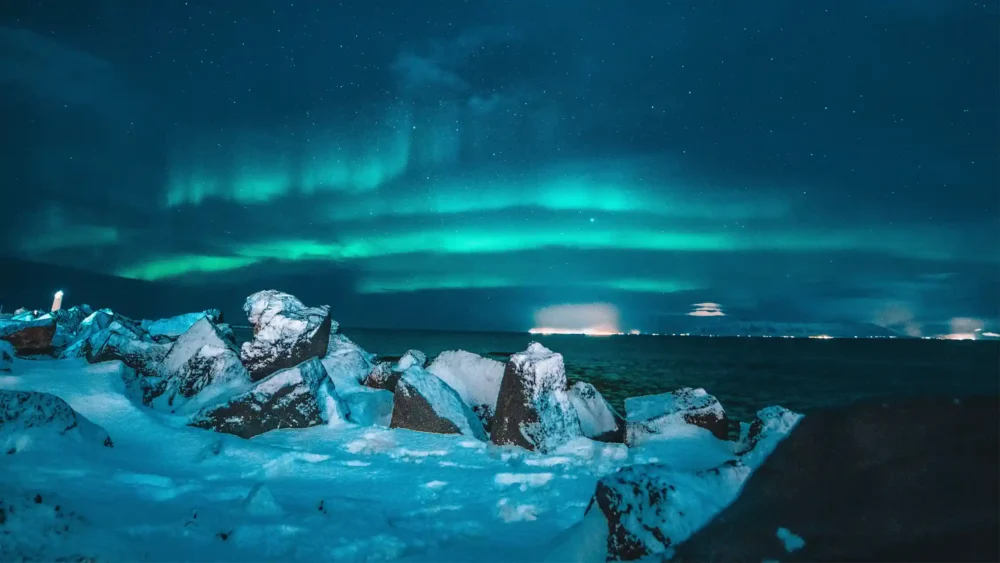Iceland is one of the most popular destinations for solo travelers. With its breathtaking landscapes, unique culture, and friendly locals, it’s no wonder why people from all over the world flock to this Nordic island.
In this ultimate guide to solo travel in Iceland, we will cover everything you need to know before embarking on your adventure. From finding the best places to visit to meeting other solo travelers, we have got you covered.
Last updated on: 12-01-2024
How safe is Iceland for solo travel?
Iceland is considered one of the safest countries in the world for solo travelers. The country holds the 1st spot on the Global Peace Index. The GPI is a creation of the Institute for Economics and Peace (IEP) and stands as the foremost global measure of worldwide tranquility.

Some reasons for its safety include:
- Low crime rates: Iceland has extremely low crime rates, making it a safe environment for travelers.
- Safe and welcoming community: the country boasts a close and welcoming community of locals and visitors, which can help solo travelers feel more at ease.
- Excellent transport and tourist network: Iceland has an efficient transport system and a well-developed tourist network, making it easy for solo travelers to navigate the country.
- English is widely spoken: English is widely spoken in Iceland, making it easy for solo travelers to communicate with locals and other travelers.
- Variety of activities: Iceland offers a wide range of activities for solo travelers, such as snorkeling, glacier hiking, horseback riding, whale watching, and more.
What is the best time to visit Iceland for solo travelers?

The best time to visit Iceland for solo travelers depends on your preferences and the activities you want to experience. Here are some key points to consider:
- Winter months (September to March): This period offers the opportunity to see the Northern Lights, which are usually best between September and March. However, daylight can be limited, with as little as four hours of daylight between 11 am and 3 pm. Roads can also be icy, making driving conditions more challenging.
- Summer months (June to August): During this time, daylight can stretch for 24 hours, making it easier to explore and participate in various activities. The weather is typically warmer, and the midnight sun can be an unique experience. However, this is also peak tourism season, so expect more crowds.
- Shoulder months (May and September): These months can be a good compromise between good weather and quieter tourist numbers.
Keep in mind that Iceland’s weather can be unpredictable, and it’s not uncommon to experience four seasons in one day, regardless of when you visit.
What are the most important holidays and festivals in Iceland?
Iceland has a variety of holidays and festivals that celebrate its cultural heritage, music, and art. Some of the most important ones include:
- Thorrablot (Þorrablót): this midwinter feast takes place in mid-January to mid-February and dates back to the Viking era. It involves feasting on traditional Viking foods, singing, and drinking.
- Winter Lights Festival: held in mid to late February, this festival celebrates the increasing daylight with various events and activities.
- Independence Day (National Day): Celebrated on June 17th, this day marks Iceland’s decision to become a republic in 1944. Festivities include parades, fireworks, and traditional music and dance.
- Seafarers Day (Sjómannadagurinn): Held on the first weekend of June, this festival in Reykjavik pays tribute to those who make their living from the sea, with seafood fairs, fisherman rescue demonstrations, rowing races, and strongman competitions.
- Viking Festival (Víkingahátíð á Hafnarfirði): Taking place on the second weekend in June, this festival in Hafnarfjörður features Viking culture, including cuisine, handicrafts, storytelling, archery, and demonstration battles.
- Bright Days Festival: A music festival held in Reykjavik, showcasing a variety of musical genres.
- Great Fish Day (Dalvik Fiskidagurinn Mikli): Celebrated in the town of Dalvík, this festival highlights the importance of fishing in Iceland’s economy and culture.
Source: icelandtravel.is
Keep these festivities in mind when determining the appropriate travel date, as this can affect the price of tickets and hotels.

How to meet other solo travelers in Iceland
To enhance your solo travel experience in Iceland, there are several ways to meet other like-minded travelers. Joining group tours or excursions is a great option as it allows you to connect with fellow adventurers while exploring popular attractions like the south coast or the Icelandic highlands.
Are you looking for an easy and safe way to connect with other solo travelers? Then make use of a travel buddy app. With Likeplan, you can search for travel buddies even before your trip, based on your destination and travel dates.
Create your own trips or activities, or join others’ events.

Is Iceland expensive for solo travelers?
Iceland can be expensive for solo travelers, but it is possible to manage your budget by choosing the right accommodation, transportation, and activities. Here are some average costs for solo travelers in Iceland:
- Accommodation: prices range from $80 for an Airbnb to $300 for a higher-end hotel, and $50 for a hostel dorm.
- Tours: prices vary depending on the type of tour and duration. For example, an 8-day Ring Road Tour + Snaefellsnes Peninsula costs around $2,037.
- Food & Drink: expect to spend around $50-150 per day on food and drinks, depending on your restaurants of choice.
To save money, consider booking your trip early, sharing accommodation with other travelers, and choosing budget-friendly options for food and transportation.
A suggested 7-day itinerary for Iceland

Day 1: exploring Reykjavik and the nightlife
Kickstart your solo adventure in Iceland by immersing yourself in the vibrant city of Reykjavik. Discover the unique charm and attractions this cosmopolitan capital has to offer on your first day. Dive into the local culture and experience the lively atmosphere of Reykjavik’s vibrant nightlife scene.
From cultural landmarks to dining options, Reykjavik has it all. And when the sun sets, the city truly comes alive with exciting activities and a bustling nightlife.
Day 2: the Golden Circle Route and Gullfoss Waterfall
Embark on day 2 of your solo adventure in Iceland by exploring the breathtaking Golden Circle Route. This popular tourist route takes you through stunning natural landmarks such as geysers, hot springs, and lava fields.
Don’t miss the awe-inspiring Gullfoss Waterfall, known for its powerful cascades and majestic beauty. Along the way, make sure to stop by Þingvellir National Park and the Kerid Crater to immerse yourself in the unique Icelandic landscapes.
Remember to wear comfortable shoes, bring a camera, and plan enough time for each stop to fully enjoy this unforgettable experience.
Day 3: heading south to the Glaciers
Start your day bright and early as you head south towards the glaciers. Fuel up with a delicious breakfast to kickstart your adventure. On your way to Vik, a charming town serving as a popular base for exploring South Iceland, be sure to visit Reynisfjara’s black sand beaches and basalt columns.
The next stop is Skaftafell National Park, where you can embark on a guided glacier hike or ice climbing tour. Don’t miss the breathtaking Jökulsárlón Glacier Lagoon, where you can take a boat tour amidst floating icebergs.
Finally, treat yourself to a soothing soak in one of the area’s many hot springs such as the Secret Lagoon or Seljavallalaug.
Day 4: Jokulsarlon Glacier Lagoon and the Diamond Beach
On the fourth day of your solo adventure in Iceland, you won’t want to miss visiting the Jokulsarlon Glacier Lagoon. This natural wonder is an absolute must-see for travelers exploring the country on their own.
After experiencing the breathtaking glacier lagoon, take a short walk to the nearby Diamond Beach. Here, you’ll be greeted by a stunning black sand beach adorned with glistening ice diamonds washed up from the lagoon.
During your time at Jokulsarlon Glacier Lagoon and the Diamond Beach, there are plenty of activities to choose from. Embark on a boat tour of the lagoon to get up close and personal with the magnificent icebergs.
If you’re feeling more adventurous, consider kayaking or taking a guided hike on the glacier itself.
Day 5: hiking in the Highlands and Volcano Tour
On day 5 of your solo travel adventure in Iceland, you’ll have the opportunity to explore the natural beauty of the Icelandic highlands through hiking.
As you trek through lava fields and traverse challenging terrain, make sure to pack essential gear such as warm clothing, plenty of water, and snacks.
After a thrilling hike, continue your exploration with a guided volcano tour where you’ll learn about Iceland’s volcanic activity and geological history.
Day 6: whale watching and aurora hunting
Whale watching tours in Iceland offer a close-up encounter with humpback whales, orcas, and other marine life. You can also embark on a Northern Lights hunting experience to witness the mesmerizing aurora borealis illuminate the night sky.
Day 7: farewell to Iceland
On your last day in Iceland, make the most of your time in Reykjavik by exploring its diverse markets and boutiques. These are great places to find unique souvenirs and gifts to remember your solo trip.
Be sure to visit Álafoss, a famous Icelandic wool shop, where you can purchase traditional hand-knitted sweaters and accessories.
For one-of-a-kind items, check out local artisanal shops offering handmade ceramics, jewelry, and textiles. Don’t forget to stock up on Icelandic delicacies like smoked salmon, licorice, and skyr, which you can bring back home.
What are the best ways to get around in Iceland?
There are several ways to get around Iceland, and the best option depends on your preferences, budget, and travel plans. Here are some popular options:
- Renting a car or campervan: This is the most flexible way to explore Iceland, allowing you to travel at your own pace and visit remote locations. Route 1, also known as the Ring Road, encircles the country, and other paved or gravel roads lead to various parts of the country. During the summer, a 2WD car is sufficient for navigating Iceland’s main roads.
- Public buses (Strætó): Public buses are available in Reykjavík and connect the city to major centers around the country. During the summer months, additional scheduled buses run through the interior of the country. However, buses can be expensive, and schedules may be limited.
- Flights: Domestic flights are available between Reykjavík Airport and other major centers, such as Akureyri, Egilsstaðir, and Höfn. Flights can be a convenient way to travel between locations, but they can also be expensive.
- Guided tours: Many tours are available, ranging from whale-watching cruises and hikes to bus safaris covering historic sites, hot springs, and volcanoes. Some popular routes, like the Golden Circle, can be done independently, while others may require a guided tour.
When traveling around in Iceland, it can be useful to know a few words of Icelandic:
- “Hæ, hvort er…?” (Hello, where is…?) – This phrase can help you ask locals for directions or recommendations.
- “Takk fyrir” (Thank you) – Showing gratitude is always appreciated, and this phrase is a simple way to express thanks.
- “Hvernig á að…” (How to…) – This phrase can be followed by a specific activity or question, such as “Hvernig á að finna góða matstöðum?” (How to find good restaurants?).
- “Ég er einstakur ferðamaður” (I am a solo traveler) – This phrase can help you connect with other solo travelers or locals who may have recommendations for activities or places to visit.
- “Hvort er það svona…” (Is it like that…) – This phrase can be followed by a specific question or topic, such as “Hvort er það svona að þú getur snúið um í þessum vetur?” (Is it like that you can turn around in this weather?).
5 Must-try dishes in Iceland

Indulge in the unique flavors of Icelandic cuisine. The following dishes offer a taste of Icelandic cuisine and culture, and trying them is a great way to immerse yourself in the local food scene.
- Hákarl (Fermented Shark): this is Iceland’s national dish, made from fermented Greenland shark. It has a strong ammonia-like smell and is considered an acquired taste.
- Skyr: similar to Greek yogurt, skyr is a popular Icelandic dairy product made from pasteurized skimmed milk. It is high in protein and can be consumed on its own or used as an ingredient in various dishes.
- Icelandic Hot Dog: known as “pylsur,” these hot dogs are made from lamb, beef, and pork, and are topped with condiments such as ketchup, sweet mustard, remoulade, fried onions, and raw onions. They are a popular street food in Iceland.
- Harðfiskur: this is a dried fish snack made from fish such as cod, haddock, or ocean catfish. It is often eaten as a snack or used as a topping for salads and other dishes.
- Lamb: Icelandic lamb is a delicacy, as the sheep in Iceland are wild and free-range, making their meat some of the most delicious in the world. You can find local variations of lamb dishes throughout the country, with many restaurants serving world-class lamb dishes.

Midori, the Chief Explorer at Likeplan, is deeply passionate about travel and dedicated to connecting travellers to enrich their journeys and create unforgettable experiences. With a wealth of solo trips under her belt, she is on a mission to empower people to venture out and explore the world, even when they have to do it alone.

